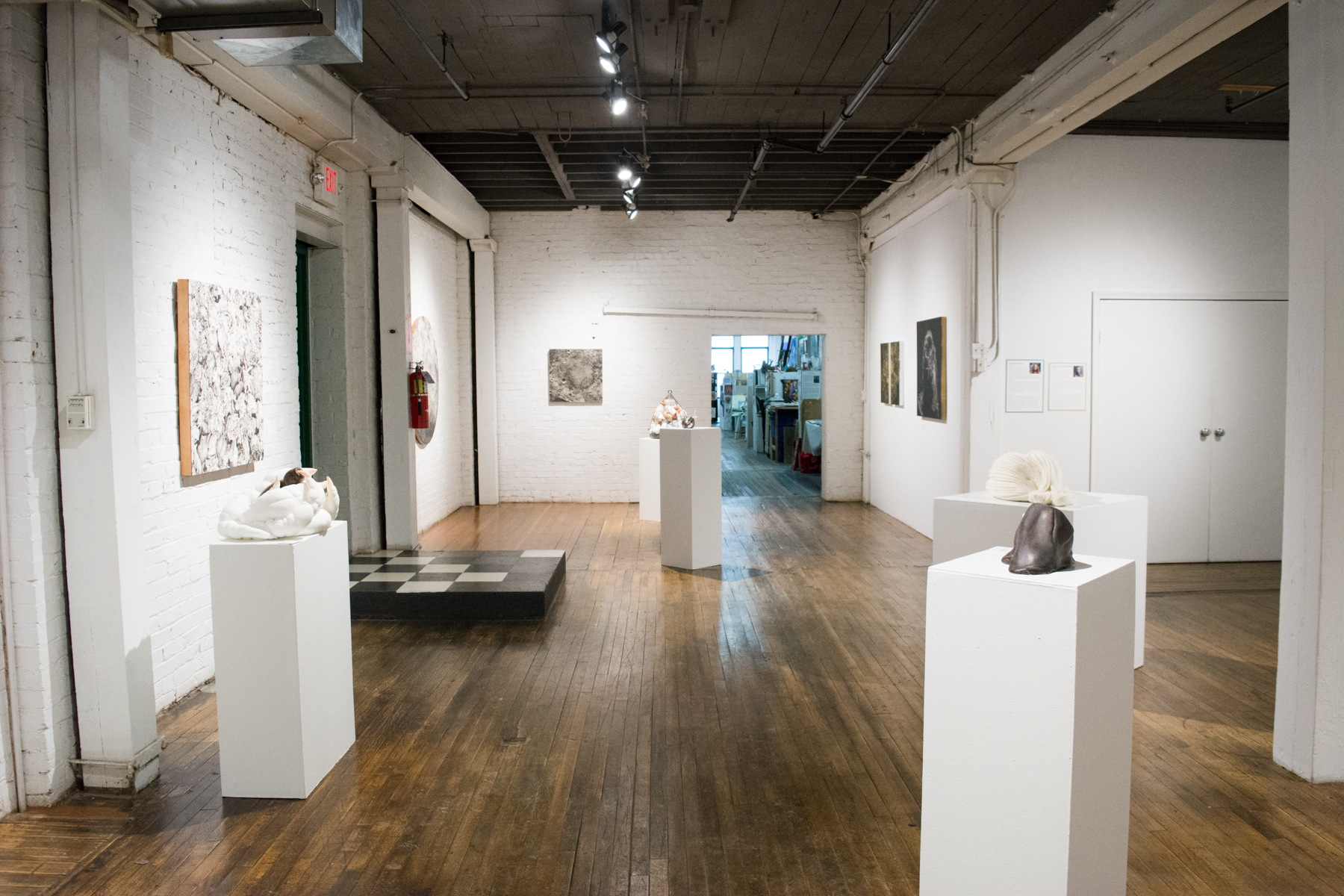This review is part of our Sixty Regional project which partners with artists, writers, and artist-run spaces to highlight art happening throughout the Midwest and Illinois. Written by Jessica Bingham, artist, curator, and co-founder of Project 1612, this review examines “Natural Wonder”, a two-person exhibition by Bethany Carlson Coffin and Stephanie Sailer at the Contemporary Art Center in Peoria, Illinois.
Distance, whether out of necessity or inability to be close, is the common thread within the works in the exhibition Natural Wonder currently at the Contemporary Art Center in Peoria, IL. As the elevator doors opened to reveal the exhibition, I felt instantly calm, yet curious. Curious about the strange forms living on the pristine white pedestals and lost within the intricate paintings and drawings that graced the walls of the gallery. The pieces spark a sense of wonder and yearning for answers about experiences we cannot possibly understand or completely fathom; they compliment each other—they are quiet, contemplative, and coexisting.
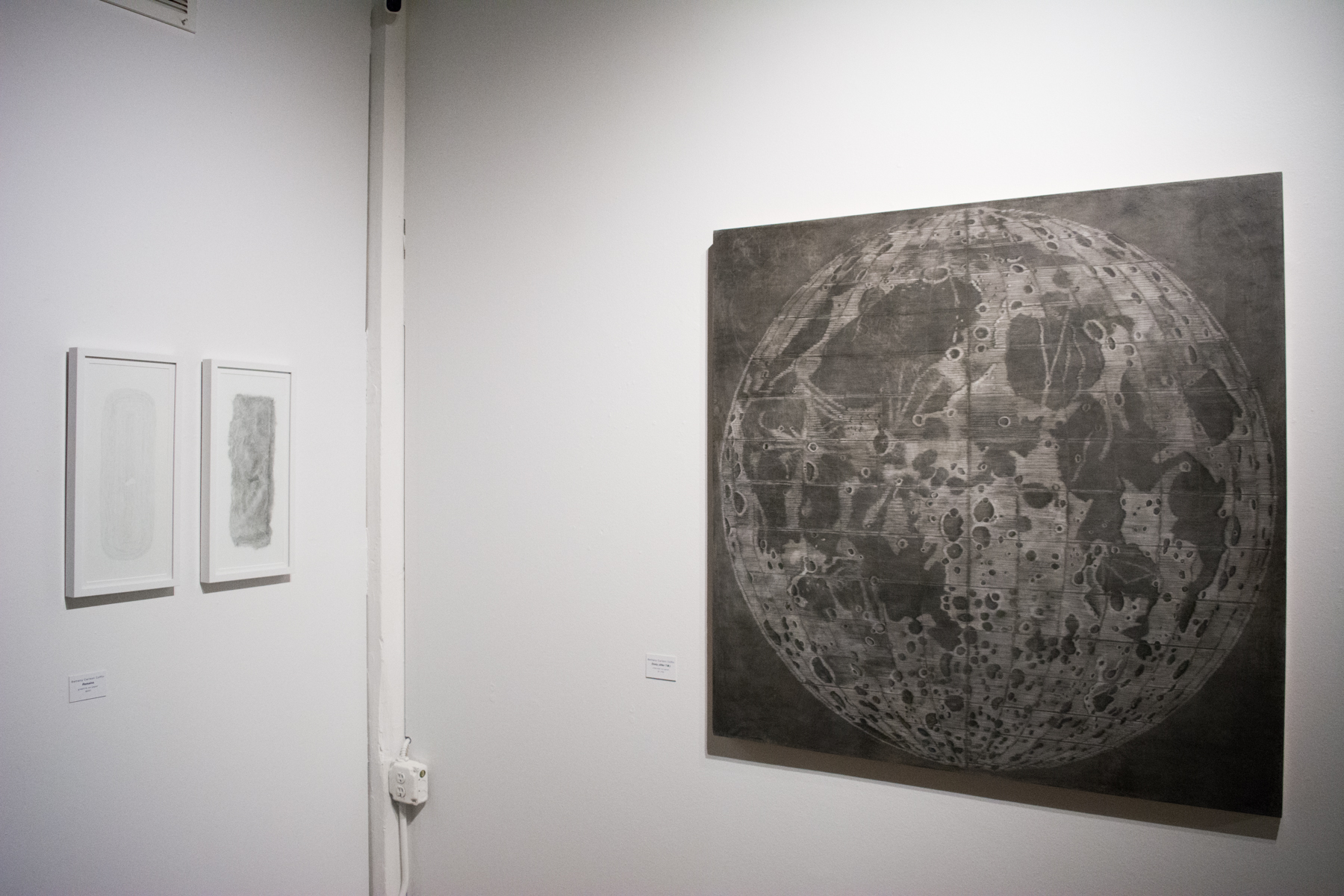
The exhibition pairs together the delicate drawings and monochromatic paintings of Bethany Carlson Coffin and the supple mixed media sculptures of Stephanie Sailer. Their works seemed caught in the fragile tides between life and death, summoning the viewer to dive into the complexity of that fine line. I instantly gravitated towards Coffin’s large charcoal drawing Dimly (After T.M.) in the back right corner of the gallery, placed perfectly beside Remains, a small, quiet diptych by the same artist. With its gridded spherical form and cratered surface, the drawing is not only one of the largest pieces of Coffin’s in the exhibition, but it also seemed to carry the most weight conceptually. The circumference of the moon is bound within the square perimeter, while a faint grid wraps around it, trying desperately to contain the imperfect craters and the darkness within them. The light from above caught the smooth and velvety surface of the charcoal, and like the stars twinkle in pitch-black skies, the work actually glistened as you moved around it. Intentional or not, this detail completed the piece.
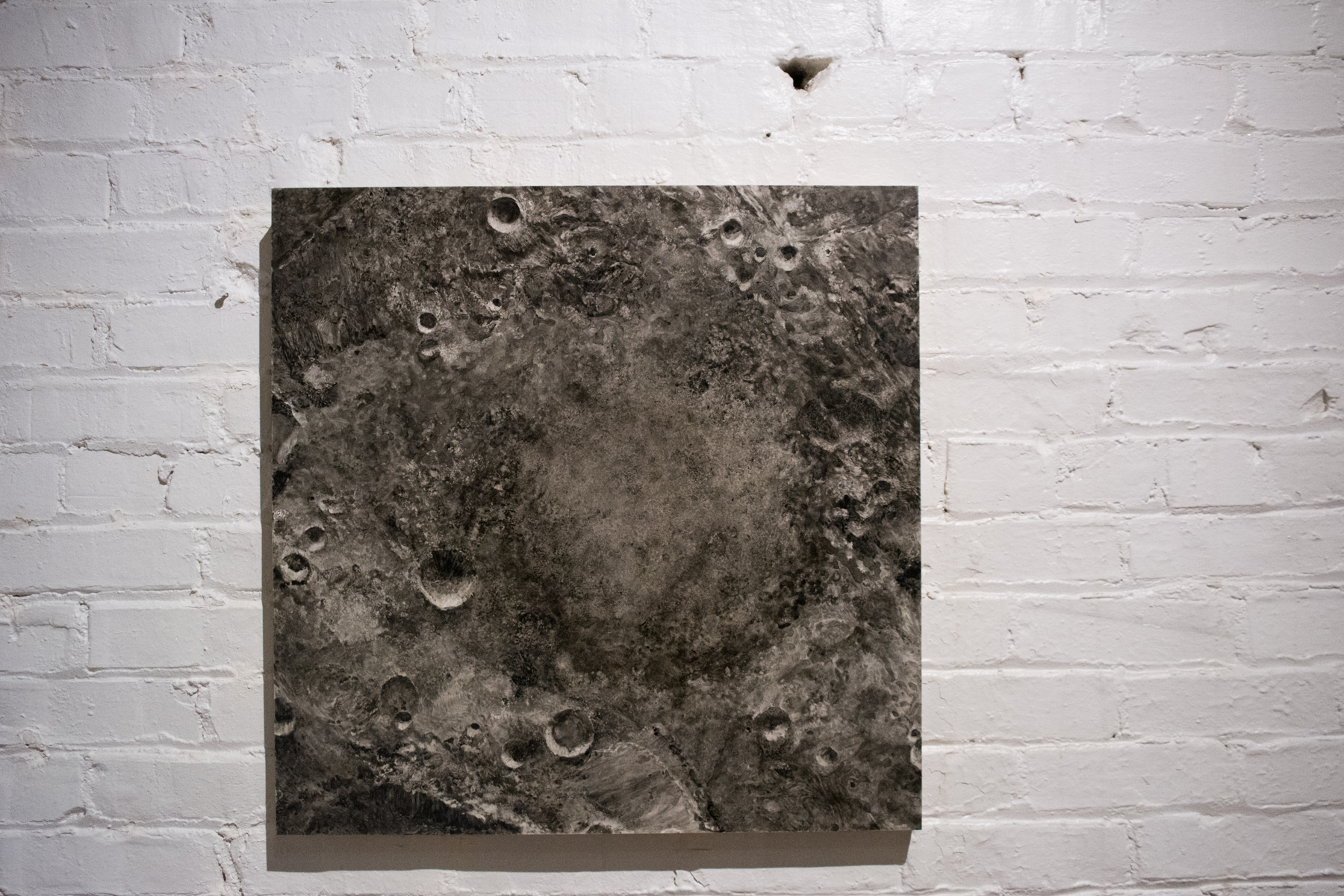
Coffin’s drawings of orbital spheres and piles of dried, dead flowers hung on the white walls of the gallery—a combination of drywall and painted bricks. The surface of the walls surely was taken into account when curating the exhibition, as a small dark hole in the mortar of the bricks mimicked the black drawn crevices and craters in A Place To Rest, a piece that appeared to be the surface of our moon, distant and out of reach. Hanging on the smooth white wall across from that piece were the only works with color, yellow-gold to be specific. Philae Sleeps and Twice Dead, a diptych, are charcoal and oil on panels; again, the charcoal is velvety, yet absorbs and reflects light simultaneously. The artist’s work deals with the complexities of death in the most beautiful of ways. By presenting the void that accompanies death—both literally and emotionally—through images of moons, Coffin is asking us to confront our mortality. Unable as we are to see the entirety of the universe, death is similarly incomprehensible. It is unavoidable, lurking and within Coffin’s work.
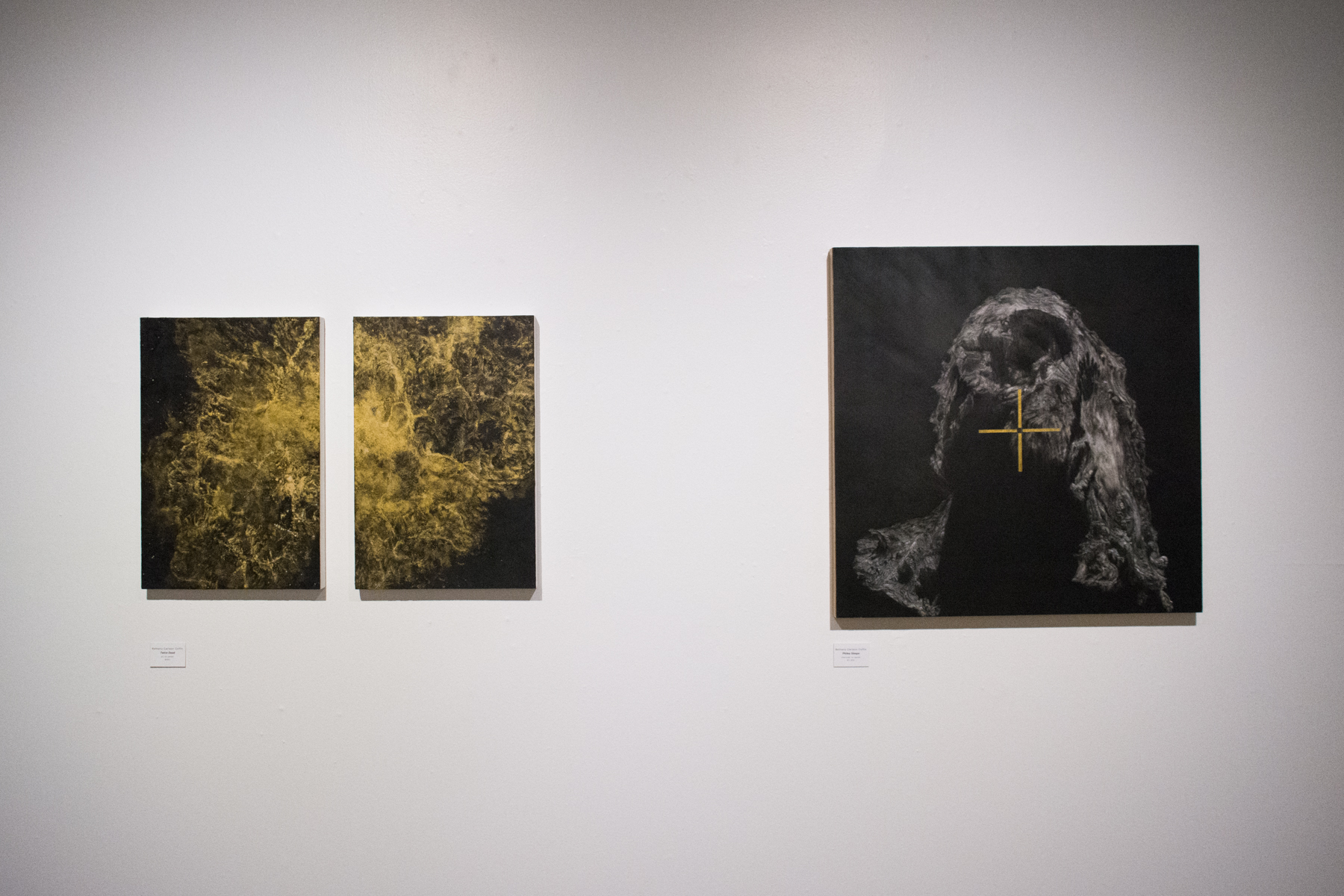
Stephanie Sailer’s oddly intimate, soft sculptures are placed around the gallery. Like Coffin’s work, Sailer’s sculptures are neutral, comprised of white, browns, and light pinks. The subdued palette of her work enhances the surreal nature of the pieces, or more accurately, creatures. Sewn white tentacle-like forms, appendages, intertwine and tangle into seemingly living pieces of artwork. They made me feel uncomfortable yet sympathetic towards and concerned for their small, manipulated, organic bodies. Silent Companion, a sculpture reminiscent of a snail that features white felt tentacles within a hard brown plastic shell, is placed adjacent to a cage stuffed with white intestinal knots, the tips a pink fleshy color. This color makes me think of Coffin’s detailed drawings of craters on the moon’s surface; craters that could be enlarged pores, freckles, or scar tissue.
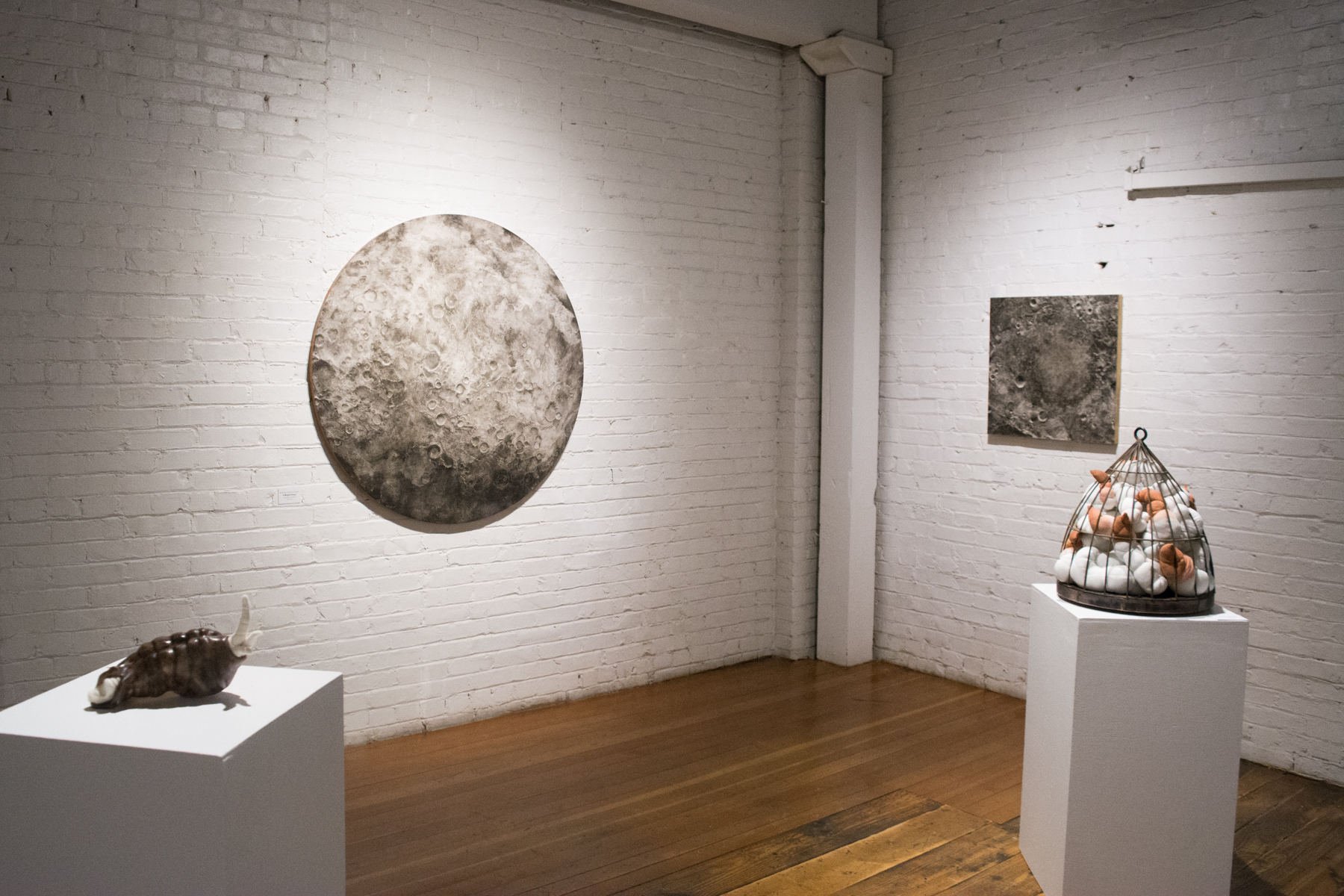
Opposite of Coffin’s Dimly (After T.M.) sits Sailer’s Moment of Transition, a circular mixed media piece of metal, fabric, rope, and wax. The materials are both containing and protecting itself, and the piece seems even more lifelike because it emits an odor of rope and wax that is distinctly its own. A tuft of short, pointy tentacles sits atop the sculpture as if ready to prick anything that might cause harm to the soft form within. References to protection are stripped, however, in another piece by Sailer that is literally devouring itself with small cream-colored teeth.
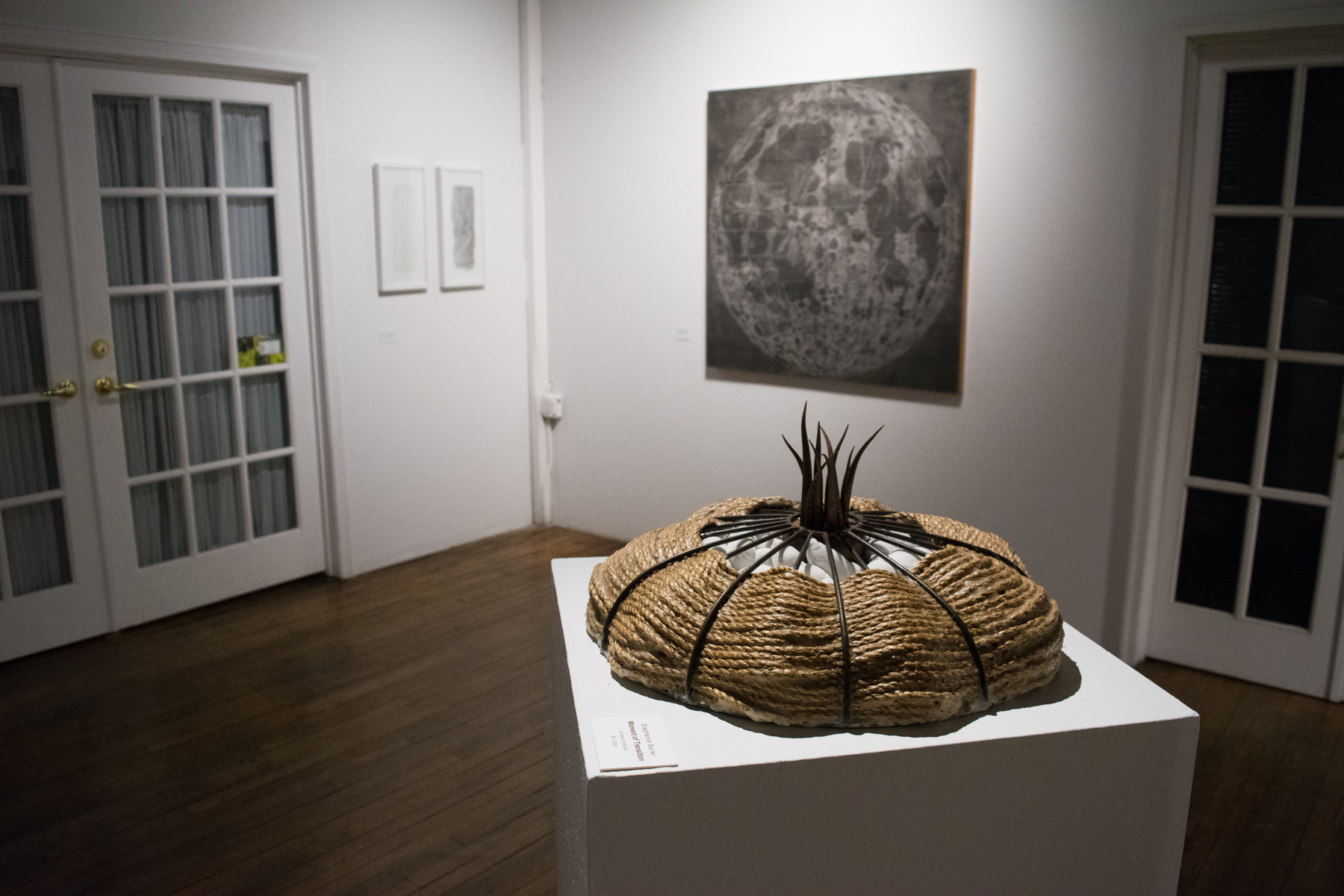
The works in the exhibitions are charged with exploration of the self, of one’s tangled perceptions of the mind and body, of love and loss, and of acceptance and denial.
Featured Image: Install view of Natural Wonders at the CAC in Peoria, IL. Five pedestals with works by Stephanie Sailer are placed around the gallery. On the walls are drawings and paintings by Bethany Carlson Coffin. Photo by Jessica Bingham.

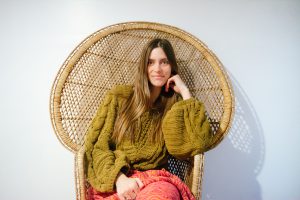
Jessica Bingham is an artist, curator, and writer. She is the Curator of Art II at University Galleries of Illinois State University in Normal, IL and the co-founder and director of Project 1612, an independent art space and short-term residency program in Peoria, IL. Follow her on IG at @Jessica_Bingham_Art and Project 1612 at @Project1612.
